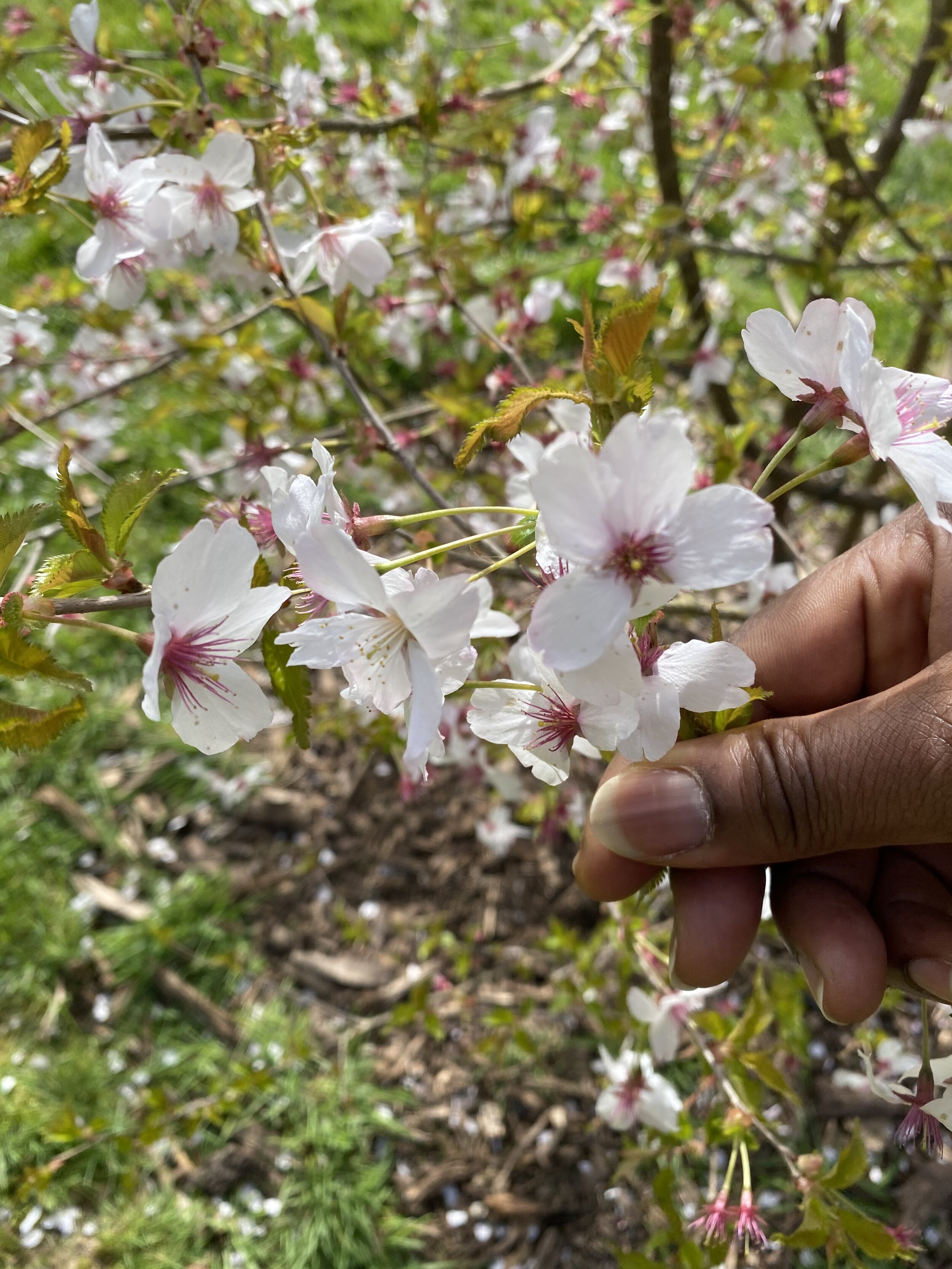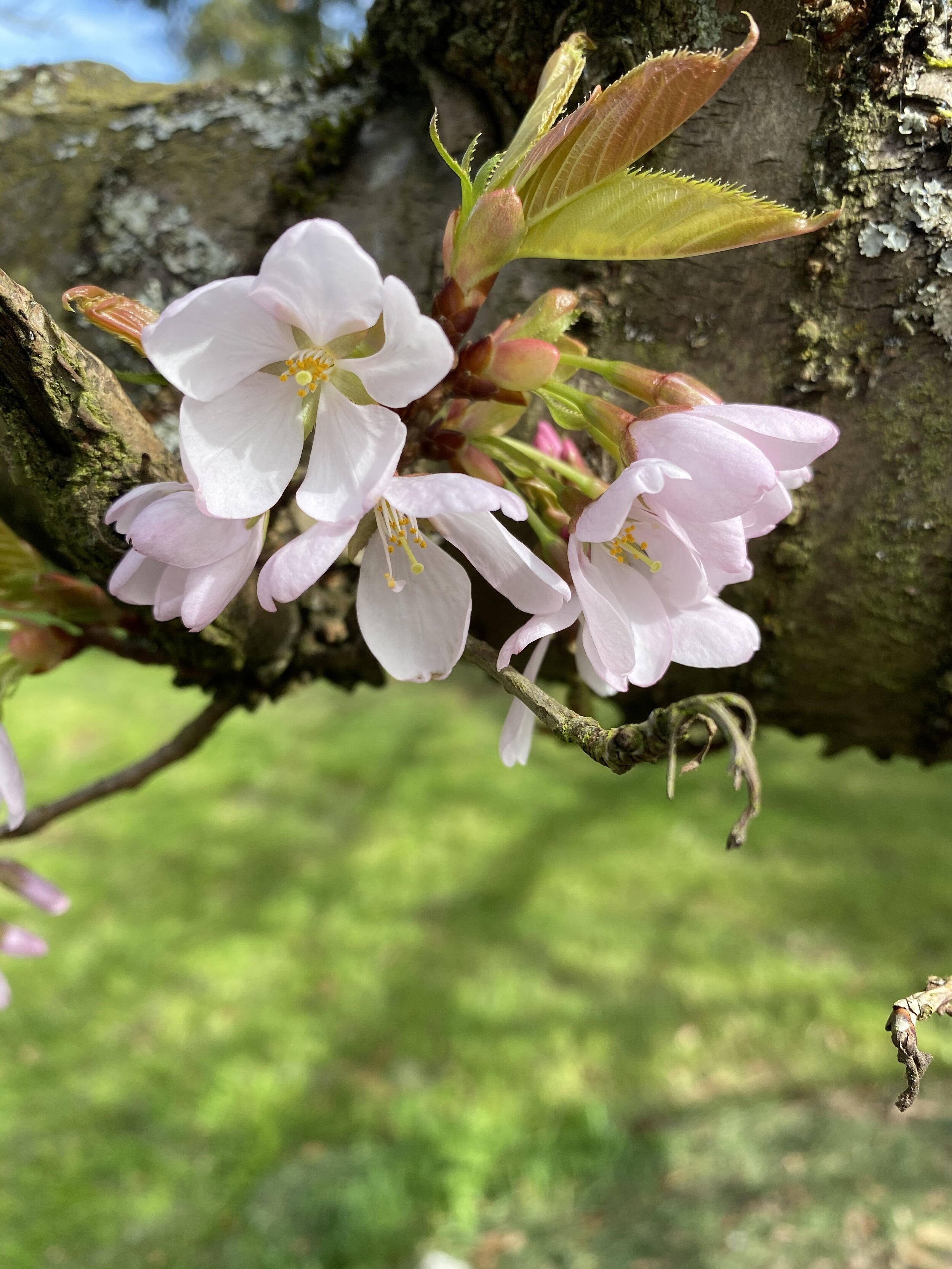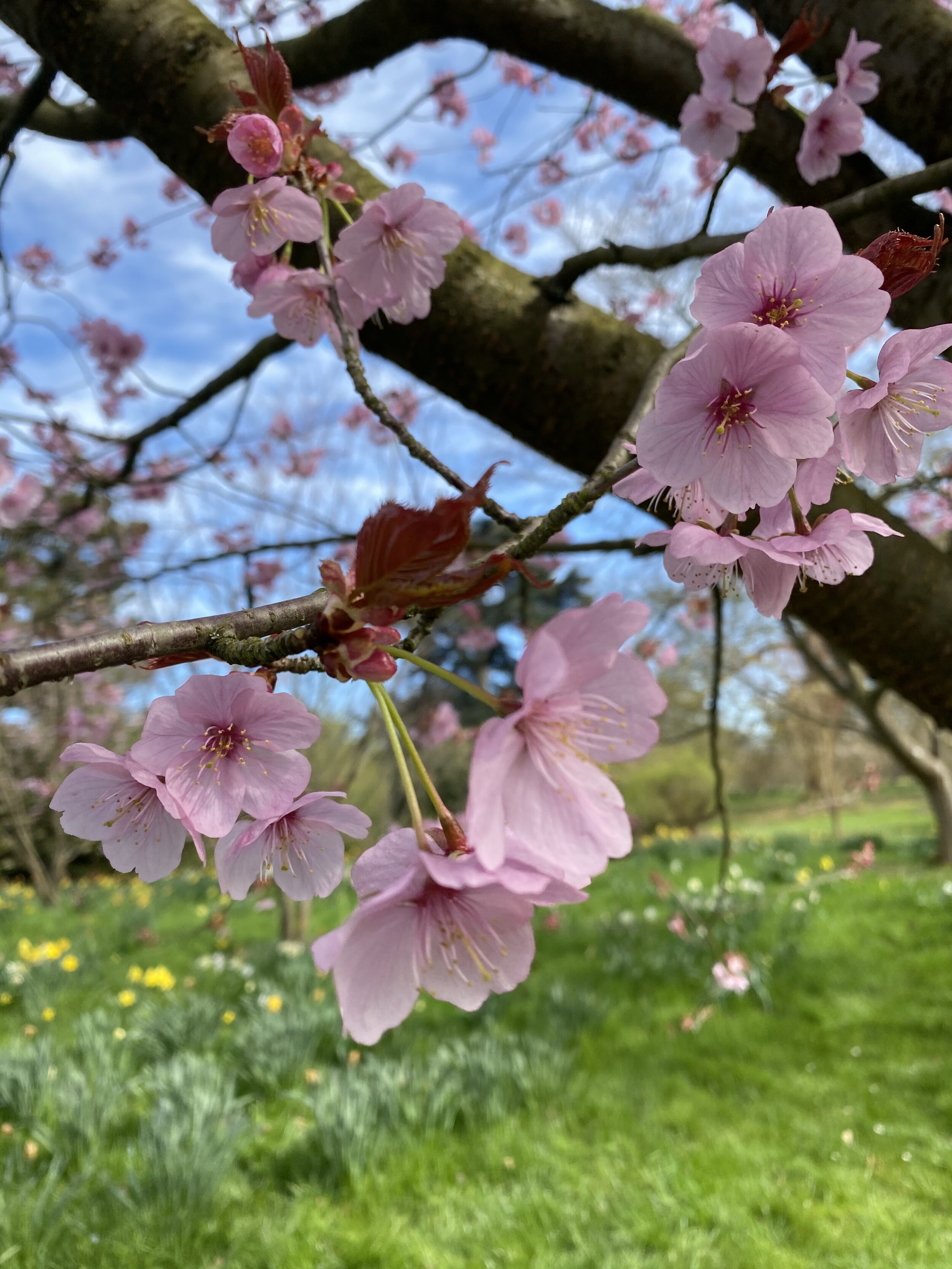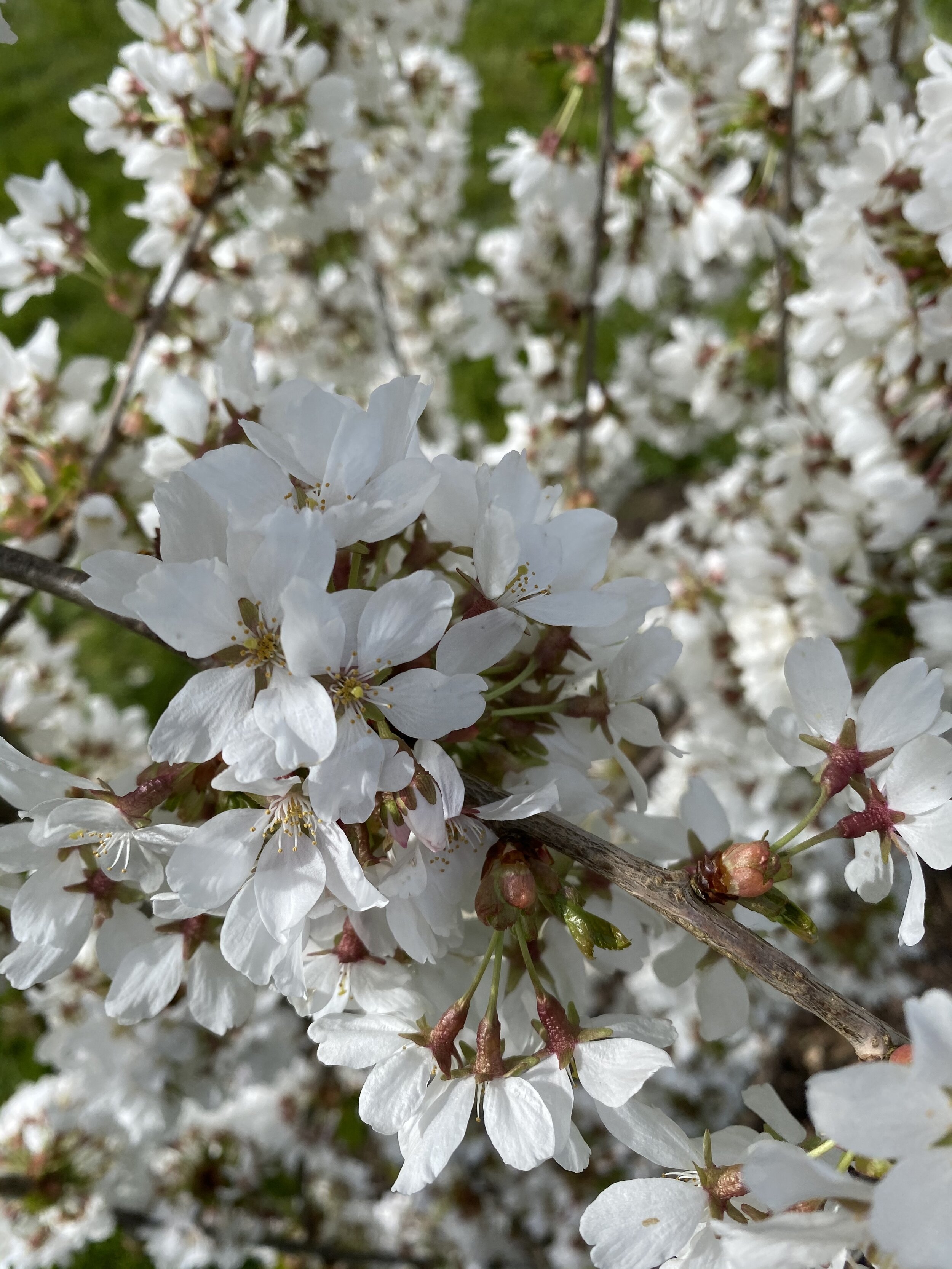Sakura and Hanami, hand in hand
Enjoying the transient beauty of flowers, particularly flowering cherry blossom, is a centuries-old traditional Japanese custom called hanami (花見, “flower viewing”).
Hanami is believed to have started during the Nara period (710–794) with the admiration of ume (梅) plum tree blossoms. By the Heian period (794–1185), cherry blossom began to attract more attention than plum blossom, and hanami became synonymous with sakura.
Sakura was once used to divine the year's harvest and to announce the new rice-planting season. In accordance with Shinto Japanese belief, kami (spirits or "holy powers") live within the cherry blossom trees. Offerings were made to the kami, followed by the drinking of sake (酒), a Japanese rice wine. Sakura represents the spirits of ancestors and family members who passed away. People feel a sense of closeness to their loved ones when the tree is in bloom.
Emperor Saga of the Heian period held flower-viewing parties and feasts which entailed the drinking of sake underneath blossom-laden sakura trees within the Imperial Court in Kyoto. Through the generations, poems, paintings, folk songs, landscaping, crafts and other creative endeavours have been inspired by cherry blossom.
Today, a formal blossom forecast is announced every year by the weather bureau, called sakura zensen (桜前線) or the cherry blossom front, which helps people plan hanami events to coincide with the brief blossoming window. Prunus serrulata blooms on the island of Okinawa first, from around the first of February. Then, from the end of March to early May in the rest of the country.
Once the preserve of the elite, today hanami is a time for all people to come together and enjoy the beauty, tranquillity and colours of nature. Hanami often takes the form of an outdoor party beneath the sakura, which may be hung with paper lanterns, during daytime or at night. Hanami at night is called yozakura (夜桜) or ‘night sakura’. The paper lanterns are lit for yozakura, adding a special ambience to nocturnal celebrations.
A whole industry has sprung up around sakura and hanami. Travel tours, talkshows, blogs, memorabilia, and more. Picnics are graced with seasonal products dyed pink such as onigiri, tightly packed rice balls, and sakura mochi, sweet, sticky rice cakes, wrapped in a pickled cherry leaf. Special hanami bento lunch boxes can also be bought for the occasion.
Etiquette: Never disturb sakura trees or shake the blossom from the trees. The trees are to be enjoyed by all during hanami, so only take up the picnic space that you need.
Larger, formally organised cherry blossom events such as festivals or kan'ō (観桜, view-cherry) are also held.
Blossom from the plum tree, ume, is still celebrated in Japan in a more ancient tradition called umemi (梅見, plum-viewing). Umemi is particularly popular among older people because they are generally more sedate than the very lively, bustling sakura parties. Ume is often represented in art and poetry. The fruit is used to make the famous Japanese liquor called Ume-shu (梅酒) or plum wine.
Hanami is of great importance to Japan, both culturally and culturally, attracting millions of tourists and bringing billions of yen into the economy.
Before we delve any further into sakura and hanami, THIS video, recorded near my home in London (below), gives us an idea of what wildlife makes of it all. Just look and listen …






















